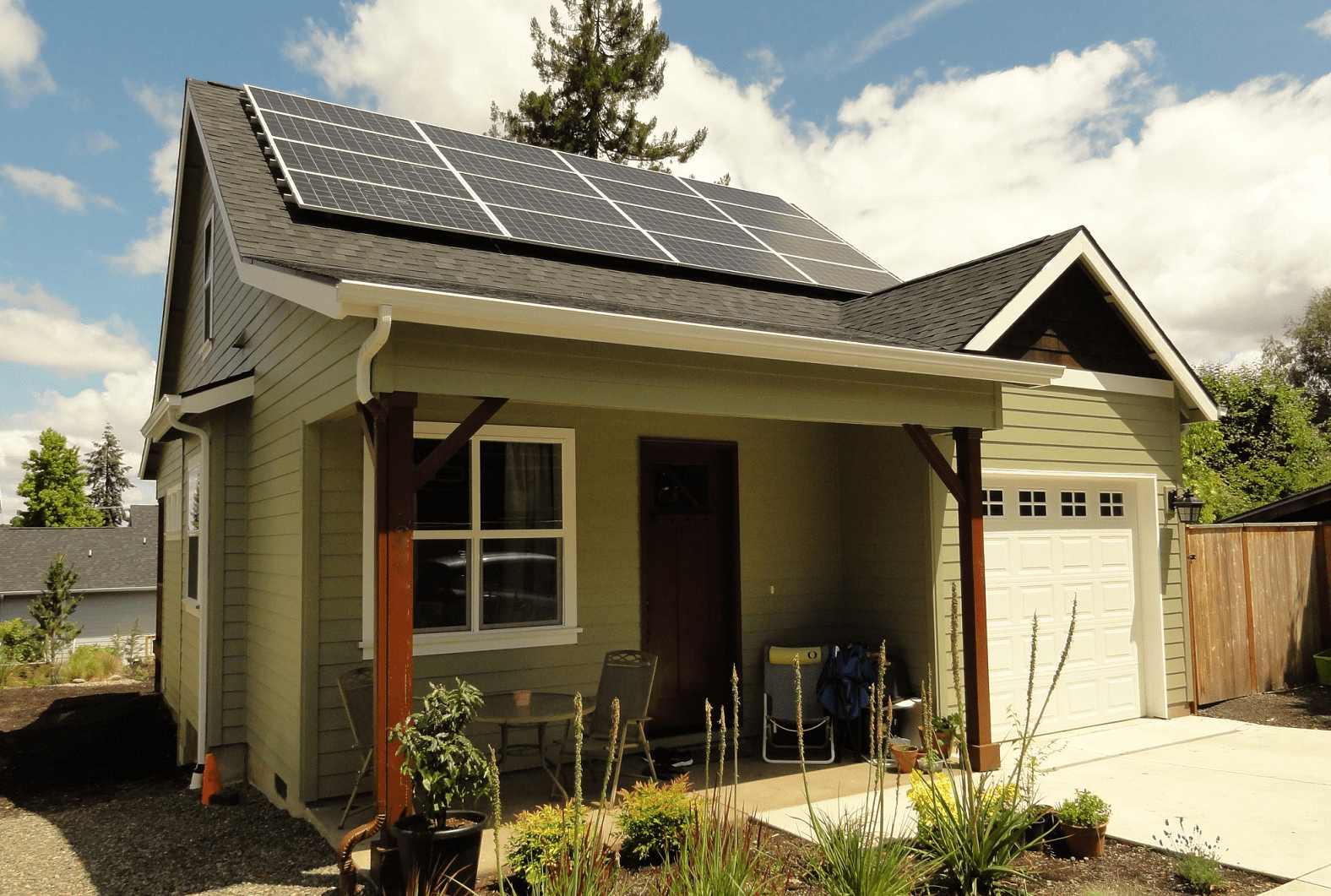Expanding Solar+Storage in Oregon

Photo Credit: Oregon Department of Energy
The Oregon Solar+Storage Rebate Program offers rebates to residential customers and low-income service providers who install solar or solar paired with energy storage. Rebates are issued to customers through the Oregon Department of Energy’s (ODOE) approved contractors, who pass the full amount of the rebate on as savings to their customers. Homeowners are eligible for rebates for solar-alone systems as well as solar paired with battery storage. Low-income service providers are also eligible for rebates to install solar and solar paired with storage. The program has a focus on expanding access to renewable energy to Oregonians who may not otherwise be able to afford the investment in solar. ODOE collaborated with other state agencies to develop an efficient model for confirming eligibility requirements for low-and moderate-income Oregonians who can receive higher incentive amounts.
Rebates to Those who Need Them Most
The Oregon Solar+Storage Rebate Program was established by the Oregon Legislature in summer 2019 and launched by the Oregon Department of Energy in January 2020. The program provides homeowners with rebates up to $5,000 for solar, and an additional $2,500 for paired energy storage systems when installed together. Low-income service providers—such as nonprofits, municipalities, or other organizations serving low-income Oregonians —are eligible for rebates up to $30,000 for solar, plus $15,000 for paired storage.
At least 25 percent of the program’s rebate funds each year are reserved for low- or moderate-income residential customers and low-income service providers. Income-eligible Oregonians can receive higher rebates of $1.80 per watt of installed capacity, up to 60 percent of the net cost of the system. For higher-income Oregonians, the rebate is $0.20–$0.50 per watt, capped at 40 percent. For low-income service providers, the rebate is capped at 50 percent of the net cost.
In the initial funding of the program, ODOE exceeded its program goal by allocating nearly $750,000—half of the rebate dollars, rather than just 25 percent—to low- and moderate-income Oregonians and low-income service providers. Sixteen low-income service providers have received nearly $380,000 in rebates so far, including Habitat for Humanity chapters, Boys and Girls Club chapters, affordable housing organizations, and others. ODOE is actively working with Oregon Tribes to encourage greater participation in the program with the newly allocated funding.
With an initial budget of $1.5 million, all funding was reserved or rebated by the end of September 2020—within nine months of program launch. In 2021, the Oregon Legislature allocated an additional $10 million to the program, and ODOE resumed accepting applications in Fall 2021. In 2022, the Legislature tacked on an additional $5 million for the program, and the agency will be seeking to continue the program through the next biennium.
As of August 15, 2022, 1,858 projects have either received or reserved rebates in 30 Oregon counties—a state investment of about $5.5 million leveraged to support $63 million in total project costs.
New Model for Program Eligibility Determination and Implementation
The program has been successful at reaching Oregonians statewide, with reserved or issued rebates for projects in 30 of Oregon’s 36 counties. In the first $1.5 million of the program, ODOE issued 352 rebates for completed projects, 24 of which are projects for low-income service providers. Of projects that received a rebate, 32 were paired solar and storage projects. The 352 completed projects that received a rebate represent solar electric generation that is estimated to displace 2,193 metric tons of CO2e (carbon dioxide equivalent) per year based on the carbon intensity of the electric utility serving the project. Nearly 50 Oregon solar companies are signed up as approved contractors.
One of the ways the agency made the program more cost-effective was to develop an efficient pathway for Oregonians to prove eligibility for the higher low- and moderate-income rebate amount. ODOE worked with Oregon Housing and Community Services (OHCS) to develop the program rules for eligibility. The agency determined that individuals and households could have their projects qualify if they were also eligible for services offered by OHCS through the Low-Income Home Energy Assistance Program, the Oregon Energy Assistance Program, or the Low-Income Weatherization Assistance Program. Participants are also able to submit tax transcripts through the Oregon Department of Revenue.
These pathways allow ODOE to confirm eligibility without having to conduct the primary income verification, which is both administratively resource-intensive and outside the scope of the department’s program expertise. Based on the success of this innovative approach, ODOE is adopting this same process for determining eligibility for a new incentive program at the agency for energy efficient rebuilding of structures lost in wildfires.
The program also provides rebates to organizations that provide services to low-income Oregonians, including developers or owners of affordable multifamily housing; community services organizations like public, Tribal, or 501(c) nonprofits; or Tribal or local government entities. These groups often can’t take advantage of state or federal tax credit incentives, as they typically don’t have tax liability. Providing rebates through ODOE’s program ensures they can save significant dollars to invest in renewable energy.
A Model for Other States
Oregon’s Solar+Storage Rebate Program could be readily replicated by other states and jurisdictions. For those that already offer a solar incentive, the program’s added incentive for installing paired solar and storage to increase energy resilience is worth noting. ODOE found success in providing the inventive as a rebate, rather than a tax credit, to reach more lower-income Oregonians and low-income service providers who may not have enough tax liability to benefit from a tax credit program.
In Oregon, the program is funded by State General Fund dollars. Considering the launch of the program was a modest $1.5 million investment, it shows that even smaller programs can make a big difference in supporting the transition to a clean energy future—and their success, like this program, paves the way for future larger investments, as Oregon did by allocating an additional $15 million total in 2021 and 2022.
Other states and jurisdictions can also benefit from some of the lessons learned from the development of ODOE’s program, including the approach to provide rebates directly to contractors who pass the savings on to their customers. The income verification pathways used in Oregon could also be replicated by other state agencies that have partnerships with organizations serving similar constituencies. ODOE’s administrative rules are publicly accessible for other states or jurisdictions to review.
In 2022, the Oregon Department of Energy was awarded a State Leadership in Clean Energy Award for the Oregon Solar+Storage Rebate Program by the Clean Energy States Alliance (CESA). According to an independent panel of judges, “This Oregon Department of Energy’s solar plus storage rebate program was thoughtfully designed to maximize participation by low-income communities, with impressive results. ODOE’s ability to collaborate with other agencies on eligibility pathways was a good approach to increase the program’s accessibility.” For a detailed case study on ODOE’s solar+storage rebate program, and the five other winners of the 2022 State Leadership in Clean Energy Awards, see a new report released by CESA in September 2022.
Representatives from ODOE discussed their award-winning program in a CESA webinar on December 9 – slides and a recording are available here.
Published On
December 19, 2022

